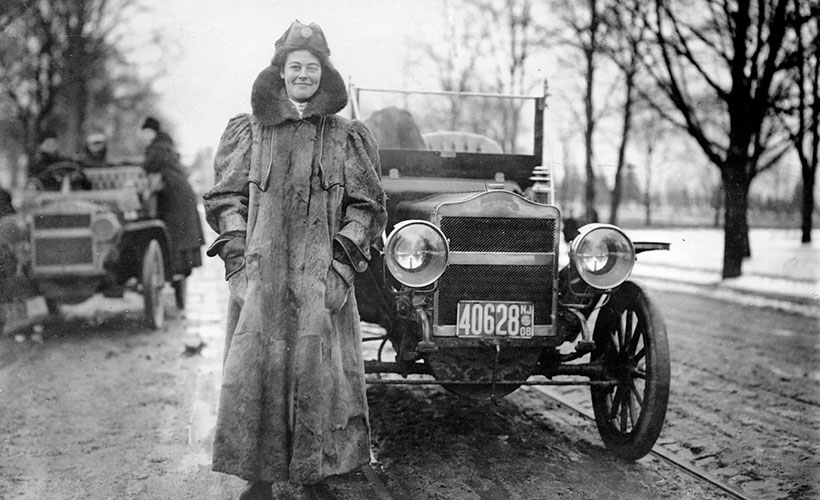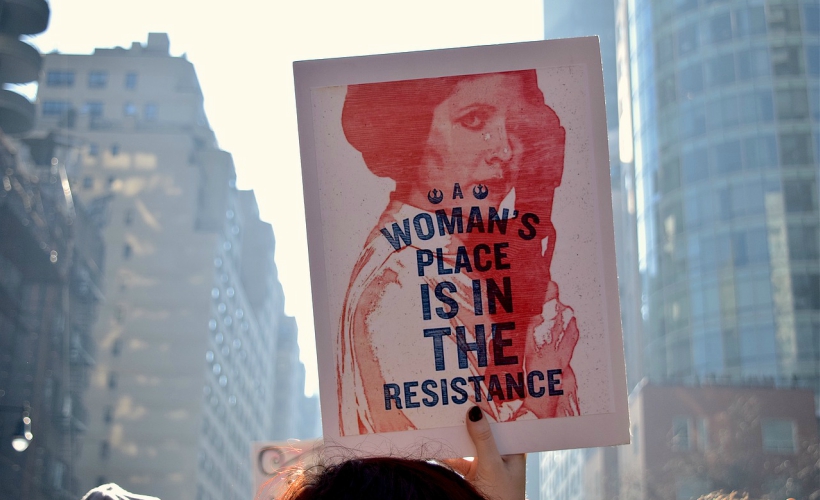
Woman suffrage headquarters in Upper Euclid Avenue, Cleveland in 1912 (Photo from the Library of Congress)As we come up to the 100th year anniversary of women earning the right to vote in the United States of America, it is important to continually challenge stereotypes, fight bias, broaden perceptions, improve situations, and celebrate women globally. After all, the 1920 amendment that allowed women to vote didn’t apply to all women, and safe travel access for women would still be scarce for many decades to come. It is perhaps more apt than ever then, that the International Women’s Day 2020’s campaign theme to be #EachforEqual.
As we strive toward a more gender-equal world, whether individually or collectively, let us look at some of the milestones of women’s travels over the past century;

1920s
Much like voting rights, travel wasn’t the same for all women in the United States at this time. While white women could participate in certain degrees of travel such as driving with more freedom and much more safely than their black or native counterparts, requesting a passport for international travel was a whole other issue – particularly for married women. The State Department often rejected passport applications of married women as they needed to be issued a joint passport with their husbands. It wasn’t until 1925 that married women were allowed to hold their own passports in their maiden names, but that too with the caveat that it specifically mentions “wife of” followed by the husband’s name within the travel document. This became the common practise for married women, hindering solo travels as it is generally frowned upon to travel without ‘male supervision’, until the late 1930s.
Contrary to the passport and driving conundrums in the States however, the 1920s was a great time for the female aviation industry across the globe. Some believed that the end of the World War had granted women more autonomy, and as such, countries such as Bolivia, Brazil, Japan, Korea, Australia, New Zealand, and Spain all saw their first licensed female pilots during this time.

1960s
After the first-wave feminist movement gave way to female voters in the 1920s, the second-wave landed in the 1960s with an aim to increase equality for women beyond enfranchisement. Nations such as Kuwait, Egypt, and the United Kingdom moved to equalise the playing ground between the genders in terms of rights to education and employment, which helped women around the world to achieve some degree of financial independence, autonomy, and of course, the means to travel.
Soviet cosmonaut Valentina Tereshkova also made history as the first woman to travel in space during this decade. A solo mission, Tereshkova spent more than 70 hours orbiting Earth in 1963, a mere two years after Yuri Gagarin’s first human-crewed flight in space. It would, however, take nearly two more decades before a second woman would be sent into space.
1970s
As the second-wave feminist movement grew, countries such as Spain abolished permiso marital, which required married women to have their husbands’ consent for nearly all economic activities including employment, ownership of property, and travelling away from home.

2000s
While female-only train cars were practised in Japan as far back as 1912, the early 2000s saw a revival in the practice to advocate for safer woman travels as lewd conduct (particularly groping) on trains has been a problem that the land of the rising sun found difficult to shrug off. With surveys showing numbers between 28% and 70% of women having been groped on train cars, public comment on the female-only cars has run the gamut, from opinions that it imposes the burden of social segregation to women rather than seeking the punishment of criminals, to suggestions that the cars send the signal that men create a dangerous environment for women who cannot protect themselves.
India also saw a rise in women’s mobility, and a need to protect against a culture of sexual assault, with the number of women needing to travel doubling in the 2000s. With strong demand for safer travel, many rail services began offering women-only cars which eventually gave rise to women-only taxi and rickshaw services as well.

2010s
In 2015, Malta made international headlines when a non-governmental organisation pointed out laws in the European nation that gave perpetrators of violent abductions a reduced penalty if they intend to marry their victim, or no penalty if they actually married the victim. The articles were ultimately abolished in 2018. Other antiquated laws that were reviewed and repealed in the late 2010s include Saudi Arabia lifting the decades-long ban on women driving, and granting women the right to obtain a passport and travel without permission from a male guardian.
With these great lengths and strides made over the past hundred years, it is important though to note that there are still outdated laws that inhibit a woman’s mobility and right to safe travels globally. In both Afghanistan and Yemen, for example, a man has the law on his side if he chooses to restrict his wife from leaving the marital home. Saudi Arabia, Morocco, and India hold dismal records on prosecuting rape, with cases in India often giving way to a victim-blaming culture and incidents of Saudi Arabia and Morocco courts charging victims for leaving the house without a male companion, being alone with an unrelated man, and even forcing marriage to allow the aggressor to escape penalties.
So while we look back and fondly celebrate the victories, it is important to take a moment to remember that it is not just the individual firsts that are monumental – it is the sum of all of them that drives us toward an equal and able world.
Cover image: A photo taken at the Women’s March in January 2018 (Photo by Elyssa Fahndrich via Unsplash)


![Women & Independent Travel – The Greatest Challenges [VIDEO]](https://zafigo.com/wp-content/uploads/2017/10/Moderated-by-Anita_Closeup_Play.png)